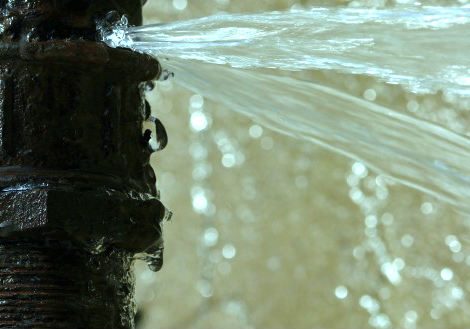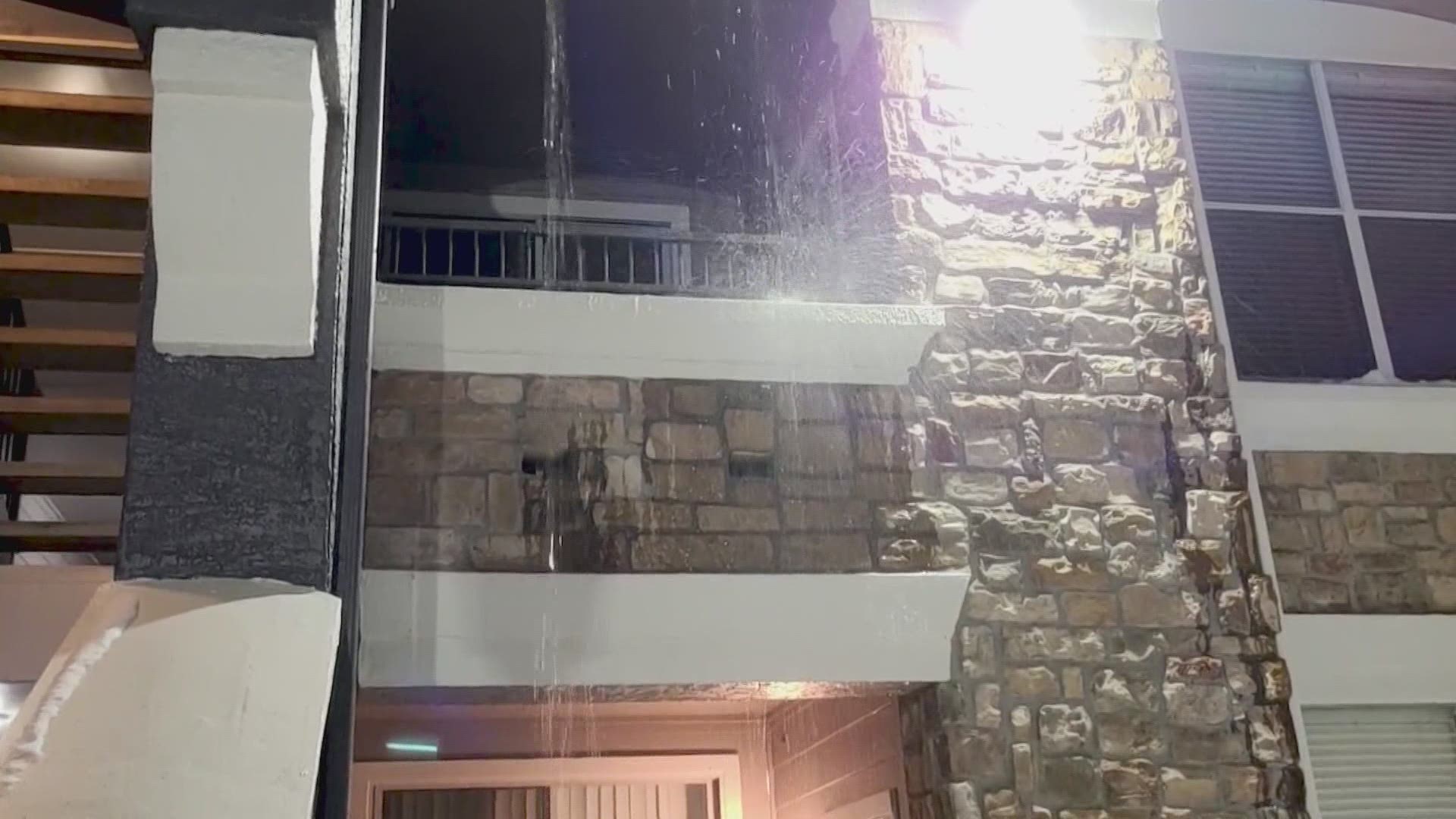The content which follows involving What To Do And What Not To Do When Dealing With Water Damage is unquestionably remarkable. Read on and draw your own personal assumptions.

What should you do if a water pipe bursts in your home? Do you want a mini-waterfall as well as flooding in a location of your home? If you find yourself in this scenario, you should act quick. The longer you wait, the a lot more extreme the damage that can happen to your home. The clearheadedness is type in these occasions. For these reasons, you need to learn exactly how to act in the event of a ruptured pipes. Due to the fact that time is of the significance, examine out the adhering to pointers below to help you act fast.
Shut down the Key Waterline Shutoff
Look for the regional shut-off valve to turn off the water in one specific location just. If you don't know where the localized shut-off shutoff is, go for the major water line shutoff as well as turn it off. Usually, the main shutoff is located outside the house next to the water meter.
Call Water Damages Repair Pros for Help
After closing the water resource, call the experts for help. Because the pipelines needed to be fixed and also there is a requirement to address the various other damages to your property, this scenario is not something you can do some DIY. If you can not deal, look for help from a trustworthy company supplying 24/7 emergency services. With their expert aid, you can avoid much bigger water damage consisting of warped walls, loose floor tiles, or damaged frameworks. Don't take this trouble lightly and also seek specialist assistance for your total peace of mind as well as a credible option.
Paper the Damages For Insurance coverage
While you're awaiting the pros to arrive, obtain some documents of the damage brought on by the errant pipe. Take images and also videos of everything. Do close-up shots of the harmed places and also valuables. Your documentation will certainly act as proof for your homeowner's insurance coverage. Maintaining proactive with this circumstance assists you to sue for coverage, which will even more sustain you and also your family to get back on your feet.
Recover Points That Can Be Saved
Take a look at the harmed things and also take out the most vital ones from the stack once you're done taking pictures. Dry them off in a dry/warm place away from the damaged area as well as try to protect them as long as you can. Drag as much wetness as you can to the product so it can start to dry.
Start the Drying Process
You need to start the drying procedure asap. The good news is, the water from your waterlines is currently tidy so you do not need to fret about drain water. The moving water might have disrupted the dirt as well as debris in your carpets as well as floorboards. In this case, put some handwear covers on as well as start some damage control. Usage pails to discard out the water. Blot out as much water as you can from the surfaces with old towels. Turn on an electrical follower or open your home windows to promote air circulation. These steps will certainly speed up to dry and deter mold and mildew as well as mildew growth.
Experts are the only people certified to assess appropriately as well as deal with the burs pipes and also succeeding damage. They normally give quiet red flags like bubbling paint, water spots.
What should you do if a water pipe ruptureds in your house? For these factors, you require to learn exactly how to act in the event of a ruptured water pipeline. After shutting the water resource, call the experts for aid. With their expert aid, you can prevent a lot larger water damage including deformed baseboards, loosened tiles, or damaged frameworks. Fortunately, the water from your waterlines is currently clean so you don't have to stress about drain water.
How to Handle a Burst Pipe and Minimize Damage
Steps to Take Ahead of Time
If you own property in an area that experiences cold weather, you need to be aware of seasonal maintenance tasks that will help you protect your property as the weather changes each year. One of the most important steps is to winterize your pipes to ensure they won't freeze or burst when the temperature drops. This includes action items like insulating any exposed pipes, detaching garden hoses and covering outdoor faucets. If the weather gets cold enough, you may even consider leaving a faucet dripping or opening cabinet doors during the coldest parts of the day.
No matter how prepared you might be, accidents and emergencies still happen. You'd be wise to set up a savings account specifically for your property so you have a "rainy day" fund set aside for unexpected expenses. All homes—regardless of age, location or condition—will inevitably need some form of emergency repair.
Steps to Take for Frozen Pipes
A frozen pipe will not necessarily burst, so if you can catch a frozen pipe early on, you could save yourself a major headache. When your area experiences frigid temperatures, be sure to check your plumbing and keep an eye out for warning signs like faucets only releasing small amounts of water or toilets not refilling when flushed. If you do run into one of these issues, you're likely dealing with a frozen pipe.
If this happens, your first step should be to cut off the water supply to that section of the plumbing. Expanding and freezing water can quickly cause damage. Even if the water supply is shut off, you will likely still deal with some leaking from the water that defrosts after the pipe has thawed. Be prepared with a mop, bucket and/or towels to quickly soak up any excess water.
In order to thaw a frozen pipe, you can use a space heater, infrared or incandescent heat lamp, or even a hairdryer to warm up the frozen area. Heat tape is also an option and should be used according to manufacturer instructions. Do not use any sort of open flame to thaw frozen pipes, as it poses a major fire hazard and can damage your pipes further.
Steps to Take for a Burst Pipe
Water damage claims are the second most common insurance claim in the U.S. When you're dealing with a frozen pipe, the water continues to expand as it freezes, which creates pressure that can cause a pipe to burst. When this happens, the crack or leak in the pipe allows water flow from the pipe to enter your home where it shouldn't. If a pipe does burst, you need to act quickly to mitigate property damage and repair cost.
Your very first step should be to shut off your main water supply to minimize flooding—typically the most expensive damage to address. Once you've shut off the water supply, make sure you identify the entire area that has been impacted by the leak. Remove as much water as possible—as quickly as possible—using a mop, sponges, towels or a shop vacuum or wet/dry vacuum. To prevent long-term damage due to moisture build-up, run a dehumidifier or fan in the affected area. Contact a licensed plumber to ensure the pipe is correctly repaired before running any water to that section of the home again. Burst pipes and the associated water damage are something you absolutely want to avoid as a property owner. If you've had to learn your lesson the hard way, don't let yourself get caught in a similar situation during the next spell of cold weather. The best way to deal with frozen or burst pipes is to prevent them in the first place—proactive winter maintenance will save you time, money and a whole lot of stress.

I'm just very curious about Do’s And Don’ts For Homeowners Managing With Water Damage and I am praying you liked the new entry. Remember to take the time to promote this blog posting if you liked it. Thank-you for going through it.
 Ariana Richards Then & Now!
Ariana Richards Then & Now! Joseph Mazzello Then & Now!
Joseph Mazzello Then & Now! Katie Holmes Then & Now!
Katie Holmes Then & Now! Kelly Le Brock Then & Now!
Kelly Le Brock Then & Now! Shannon Elizabeth Then & Now!
Shannon Elizabeth Then & Now!